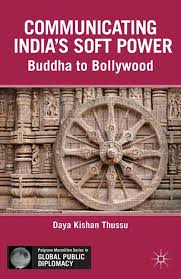Since the dawn of the 21st century, the definition of “power” has changed enormously. Soft-power diplomacy is fast gaining popularity amongst all nations. There is a race for becoming the most “well-liked” country. This power of attractiveness has lured India too. In fact, India has already achieved a lot by utilizing its soft-power.
“Power is the ability to influence the behavior of others to get the outcomes you want”. These are the words of the political scientist, Joseph Nye, who first used the term “soft-power” back in 1990. In the 90’s, India was a different country both politically and economically. Nye enlisted three types of powers when it comes to foreign policy: coercion, payments and attraction. A nation can use its military or other forces to dominate and control other nations or it can “buy” a nation’s loyalty by offering monetary benefits. The old tale of carrots and sticks applies here. The middle path to this is drawing attention by showing the world the richness of our culture, political values and morality based foreign policy. It involves fabricating a unique global opinion of the country; a perception where in other nations automatically look up to you to lead without the use of force or financial bullying.
This middle path is what he termed as “soft power”. In the 21st century, the nation with a mammoth army or infinite capital might not win but the one with maximum friends stands a fighting chance. For instance, the United States lost the Vietnam War, the USA had a huge military but the world opinion favored Vietnam. Soft power diplomacy has changed the very definition of the word “power”.
India already has already shown a lot of potential for developing into a soft power. India’s rich cultural heritage and inspiring history have played major roles in building a flattering image internationally. India’s culture and economy is ever-evolving. In the 90’s, India was a different country both politically and economically. When Nye first spoke of America as a soft-power, India was battling an economic catastrophe alongside a political turmoil. The situation has changed drastically over the next decade and India paces forward to become a super power by 2025.
The Modi government in 2014-15 has been quite successful in unshackling India’s soft power status. Prime Minister Modi’s premeditated visits to various nations in a short span will go a long way in amplifying India’s mass-appeal. Holding out a friendly hand without compromising India’s national interests, should be the government’s plan of action in the coming years.
Myth or reality, only time will tell, but the questions remain: what sort of global power will India opt for? Will she stick to her legacy of peaceful diplomacy or will we witness a more aggressive world-policy? Or will India choose to utilize the power of attraction? Will a foreign policy tilting towards soft power diplomacy help India politically? Do global perceptions accurately reflect what the reality is? How much role will “Brand India” play in fulfilling the dream of becoming the next super power?
Click here for government certifications





5 Comments. Leave new
Great work done. From topic selection to the way it has come out, i admit that the post is outstanding. 🙂
Good effort
That was a very good explanation and you presented well.. Good..
GOOD ONE
Its was really good 😀
We always behing different countries looking about their growth 🙁
we dont have time to look at our mother land itself 😀
It filled with many resources and we are not able to explore it 😀
Very well wriiten 😀
Good work 😀